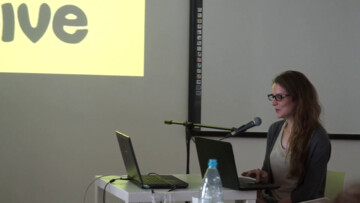In medical terminology, a pathological fracture is a broken bone caused by a specific disease – osteoporosis, cancer, cysts, genetic syndromes, or the more nebulously defined “frailty syndrome” that afflicts the aging and geriatric. While in a young healthy body, a broken bone may often mend itself to become even stronger than it was before, a pathological fracture will not knit itself back together to engender a new vigour, but persists, achingly, and catalyses the slow decline of the organism.
The easiest way to narrate a history is to identify a certain breaking point, and then point toward a resulting mending process (which should ostensibly lead to something new) or the heroic death or failure that this break produced. But in Egypt, a modern art history could rather be narrated as a series of lingering fractures, wounds and ailments that persistently engender new irritations and complications. Take, for example, a strange series of India ink drawings by Abdel Hadi Al-Gazzar, the best-known Egyptian painter of the 20th century, who has been written of as the son of Nasser’s “revolution” and the documentarian of the great nationalist period that flowered with the end of the British occupation. But these strange drawings produced in the 1960s, depicting frail and abused half-human-half-animal bodies tormented by strange technological apparatuses, have little to do with a clean break with history, but rather suggest a chronic pathology with long-lasting symptoms that have a different sort of transformative potential.


